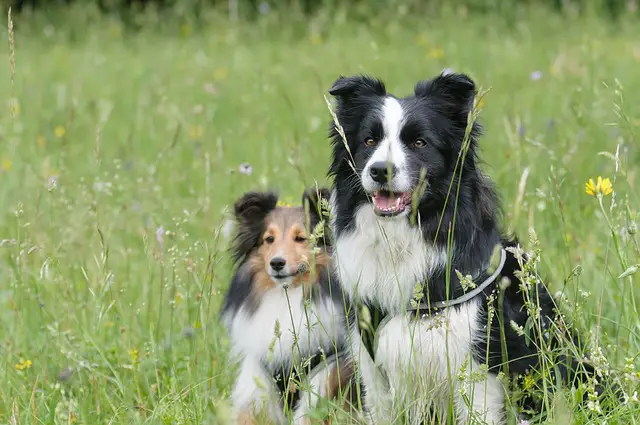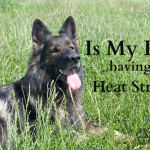Dog Intelligence: Studying Herding Breed Dogs
One Study on Dog Intelligence Hopes to Learn More
Bred for intelligence, the herding breeds hold high rank amongst the keen thinkers of the dog world. But, when it comes to what we regard as intelligence - tested in a formal environment - how does the herding breed stack up? In a recent study, A General Intelligence Factor in Dogs, Rosalind Arden and Mark James Adams take a serious look at that question.
Telepathy or Communicating with Intent?
There’s no disputing the fact that dogs are intelligent. Herding breeds, in particular, often astound us with their uncanny ability to comprehend even the most nuanced of cues. Sometimes they appear to be one step ahead of us, and I’m convinced that my own herding breed dog communicates telepathically. Recently, I caught her looking pointedly at my glass of water and then staring meaningfully at me. I soon discovered that she was alluding to her own water bowl, which was, of course, empty. Clearly, I was not simply reading her signals - she was communicating with intention.
The 'g' Factor
A General Intelligence Factor in Dogs, seeks to determine if dogs have what psychologists call ‘g’ factor. Found in humans, the ‘g’ factor, or generalized intelligence, is the presence of an underlying intellectual capacity that informs the ability to problem solve, reason, and respond to complex tasks. Intelligence quotient (I.Q.) tests are generally composed of a variety of sub-tests designed to assess different forms of intelligence, such as spatial skills or memory. But, intelligence research has long shown that those who score at a certain level on one segment of a test tend to score comparably across the board. Researchers have concluded that there is a deeper level of intelligence at work.
So do dogs simply have a set of skills and an affinity for interaction, or do those furry noggins have the ability to assess, infer, and problem solve? The researchers began by first rounding up a large cadre of dogs and then creating an exam that was quick and dirty - just long enough to assess the dogs adequately, yet short enough to keep them from falling asleep at their desks. Of course the researchers, being intellectuals, were able to create an entertaining series of tests each of which had the essential requirements for critical thinking - complexity.
Subjects Chosen for the Study: Herding Breed Dogs
Sixty-eight Border Collies hailing from a small rural community in Wales were selected for the trial. Though studying one breed of dog from one localized area may seem counter-intuitive, narrowing the playing field makes sense - each dog had similar backgrounds and training. The fact that the dogs were of the same breed eliminated the possibly confusing influences of breed-specific traits and major genetic differences such as height and leg length.
All of the dogs in the study were working farm dogs and as such, were kenneled outdoors and accustomed to interactions that related solely to farm work and herding. Games, dog treats, and moving through the house to find the sunny spot was not part of their very structured daily routine.
The dogs were split down the middle gender-wise, with 34 males and 34 females. They ranged in age from 1-12 years old.
The Study Begins
The entire test, composed of six sub-tests, took approximately one hour to complete.
- Four detour tests of increasing difficulty were employed. In this challenge, a food treat was placed behind a visible barrier. The dogs were timed to see how long it took them to figure out how to access the treat. Originally designed for dogs in 1927 by German psychologist, Wolfgang Kohler, this test examines insight, navigation, and spatial ability.
- Next up was a quantity-discrimination test. In this test, two plates with different amounts of food were placed on the floor. Repeated trials of this test were employed to ascertain whether dogs mindlessly follow their nose or actually consider their options before they dine.
- The last, a point-following test, assessed the dogs on their ability to follow the direction of a person pointing at an inverted beaker. The researchers set up two beakers, one with a treat underneath it and one without. A tester stood between the beakers and pointed to the beaker that did not contain the treat. This test was repeated 10 times and examines the dog’s ability to respond to a human cue.
The Results are In!
The results were illuminating in a number of ways. First, the big answer is a resounding “yes” - dogs do have the ‘g’ factor, or underlying general intelligence that the researchers were seeking to establish. The results of the test showed that overall, the dogs that did well on one subset of tests, such as the detour tests, also did well on the food quantity and point-following sub-tests - this finding is indicative of that elusive “informing” intelligence that psychologists and scientists continue to see in intelligence research.
Additionally, it was noted that the dogs that were more accurate, tended also to be faster. The researchers looked at age and found that older dogs did not show any differences in speed - they were neither slower, nor faster than younger dogs ... on any of the tests. However, one point to note: older dogs, on average, were more accurate than the younger dogs on the point-following and food-quantity tasks.
Scores were also looked at from a gender perspective and there were no obvious differences of performance between male and female dogs.
A major motivating factor that fuels intelligence research is that studies continue to indicate a positive correlation between high-intelligence and overall health, lifespan, brain resilience, and even physical attractiveness. The study of animals provides additional insight because non-human subjects are generally devoid of many confounding environmental challenges, such as socioeconomic factors, pollutants, poor habits, such as smoking and alcohol use, that invariably muddy the waters of human research. Dogs, in particular, since they are comfortable with humans and amenable to testing, make ideal subjects.
Further Questions, Possible Future Studies
Could doggy I.Q. tests become part of the perfect pedigree? The future is unknown, but one thing is clear: canine intelligence is a real and measurable trait - one that could become a deciding point in dog selection. Despite this, we must remember that I.Q. alone does not fully express the entirety of dog ownership, especially when it comes to the herding breed dog. The working breeds represent a particular stratum of canines that must coincide seamlessly with the humans that they work with. While intelligence cannot be overlooked, it is the intuitive ability for the dog and owner to read one other - their relationship - which remains of prime importance.
Article By:
Andrea Peck
Resources: Arden, Rosalind and Mark James Adams. ‘A General Intelligence Factor in Dogs.’ Intelligence. Volume 55. March-April, 2016: 79-85. Science Direct. April 2016. Link to Study Found Here Gottfredson, Linda S. ‘The General Intelligence Factor.’ Scientific American. 1988. Link to Article Found Here







